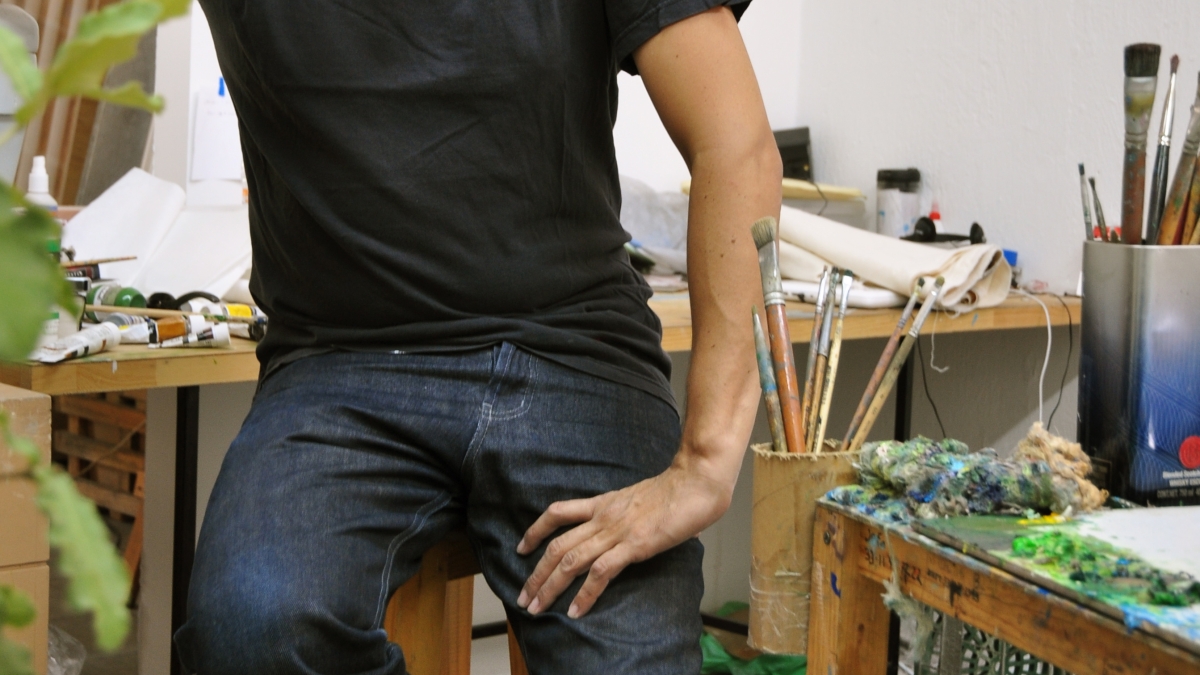Artist Eduardo Sarabia talks treasure hunting, painting and 'Moctezuma's Revenge'

Eduardo Sarabia is no stranger to the art world. His latest exhibition, “Moctezuma’s Revenge,” which opened this season at the ASU Art Museum, is just one in a long list of successes for this emerging Mexican-American artist. Sarabia’s work has been shown at the Los Angeles County Museum of Art, the Santa Monica Museum of Art, Museum of Fine Arts Boston, the Whitney Museum of American Art, L.A. Louver and the New Museum of Contemporary Art, as well as at the 51st Venice Biennale, the 2nd Moscow Biennale and the Istanbul Biennial, among others.
Sarabia, who grew up in Los Angeles and presently lives and works in Guadalajara, Mexico, uses his artwork to make reference not just to a physical border, but to a dividing line in the identity of one who feels at once familiar with and distant from his or her cultural heritage.
“Moctezuma’s Revenge,” the first comprehensive solo exhibition of works by Sarabia, features more than 40 works of art from both previous and new bodies of his work in a variety of media, including sculpture, painting, video, fiber and works on paper. It is on view at the ASU Art Museum’s 10th Street and Mill Avenue location on ASU’s Tempe campus through April 26, 2014.
Before the exhibition opened, Sarabia sat down with the curator of the exhibition, Julio César Morales, and Brittany Corrales, Windgate curatorial intern and master's candidate in art history, to talk about his influences, dreams and new work.
JCM: One of your earliest works dealt with the investigation of your grandfather’s treasure map of the mythical hidden treasure of Mexican revolutionary Pancho Villa. Can you talk about the research and events that led to your search for the hidden treasure?
ES: I started researching companies and people who do treasure hunts. There are a lot in the United States, and I was interested in having this set up as a business. I talked to a lawyer friend of mine, who helped me write up a joint-venture agreement for potential investors. I met with them and talked about the project, the evidence and everything that my grandfather left me. They bought shares in my company, which was called Pacific Discovery Group of the Americas. I made stock certificate venture drawings that they purchased. It was an edition of 10 – I figured it was a rough number of what I needed to start the search. I did a round of fund-raising and bought some equipment, and just went down to Mexico and started. I was a little bit naïve about going down there and what I was going to find. I met up with a friend of my grandfather who had gone with him on one of his searches, so he pointed me to where we thought the treasure would be, and that’s where we started looking.
BC: You often infuse elements of humor into your work to deal with darker issues. The exhibition title, Moctezuma’s Revenge, is a phrase often used to describe a traveler’s digestive complications upon entering a new country, thought to be a lingering curse from the conquered ruler of the Aztec empire. What were your reasons for choosing this title?
ES: I think it is a funny phrase, but it is a very strong phrase. For the exhibition, I wanted to make a connection between what has been happening in Mexico in the present to what happened in the past using these traditional languages to bring meaning to contemporary culture. I use an anthropological approach to the work that gives it a connection with Moctezuma and the Aztecs – what we know about them and how we are living now. There are beautiful parts of the culture and violent aspects to the culture, as well. So, at one point the title just made sense to me. It was something that I had thought about years ago and was waiting for the right moment to use, and it made sense to do it at an exhibition in Arizona. There is so much friction with the politics with Mexico here in this state. The title will hopefully trigger some kind of emotion. Once you come see the exhibition, you will notice that it has nothing to do with what you thought it would be about.
For the full interview with Sarabia, visit the ASU Art Museum's blog.